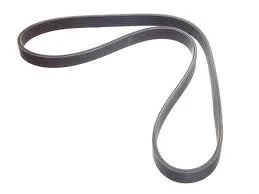- Arabic
- French
- Russian
- Spanish
- Portuguese
- Turkish
- Armenian
- English
- Albanian
- Amharic
- Azerbaijani
- Basque
- Belarusian
- Bengali
- Bosnian
- Bulgarian
- Catalan
- Cebuano
- Corsican
- Croatian
- Czech
- Danish
- Dutch
- Afrikaans
- Esperanto
- Estonian
- Finnish
- Frisian
- Galician
- Georgian
- German
- Greek
- Gujarati
- Haitian Creole
- hausa
- hawaiian
- Hebrew
- Hindi
- Miao
- Hungarian
- Icelandic
- igbo
- Indonesian
- irish
- Italian
- Japanese
- Javanese
- Kannada
- kazakh
- Khmer
- Rwandese
- Korean
- Kurdish
- Kyrgyz
- Lao
- Latin
- Latvian
- Lithuanian
- Luxembourgish
- Macedonian
- Malgashi
- Malay
- Malayalam
- Maltese
- Maori
- Marathi
- Mongolian
- Myanmar
- Nepali
- Norwegian
- Norwegian
- Occitan
- Pashto
- Persian
- Polish
- Punjabi
- Romanian
- Samoan
- Scottish Gaelic
- Serbian
- Sesotho
- Shona
- Sindhi
- Sinhala
- Slovak
- Slovenian
- Somali
- Sundanese
- Swahili
- Swedish
- Tagalog
- Tajik
- Tamil
- Tatar
- Telugu
- Thai
- Turkmen
- Ukrainian
- Urdu
- Uighur
- Uzbek
- Vietnamese
- Welsh
- Bantu
- Yiddish
- Yoruba
- Zulu
11-р сар . 09, 2024 14:52 Back to list
Power Transmission Using Rubber Belts for Efficient Machinery Performance
Power Transmission with Rubber Transmission Belts
Power transmission is a crucial aspect of various industries, enabling machinery and equipment to operate efficiently. One of the pivotal components in this domain is the rubber transmission belt, a versatile element used widely in mechanical systems to transmit power from a driving source to driven machinery. This article delves into the significance, types, advantages, and applications of rubber transmission belts, shedding light on their role in modern industries.
Understanding Rubber Transmission Belts
Rubber transmission belts are flexible loops made from various rubber compounds, designed to transfer mechanical power between pulleys. The design and construction of these belts are tailored to meet specific performance criteria, ensuring that they effectively handle the demands of different applications. These belts come in various shapes and sizes, including flat belts, round belts, V-belts, and timing belts, each serving distinct purposes.
Types of Rubber Transmission Belts
1. V-Belts These belts have a trapezoidal cross-section and are designed to fit grooves in pulleys. Their shape allows for a snug fit, enhancing friction and preventing slippage, making them ideal for applications demanding high torque transmission.
2. Flat Belts Flat belts have a simple, flat design, which makes them suitable for transmitting power over long distances. They can be used in conjunction with various types of pulleys and are known for their efficiency in transferring energy at lower speeds.
3. Timing Belts These belts feature teeth along their inner surface, allowing them to engage precisely with toothed pulleys. Timing belts are commonly used in applications that require synchronization between different moving parts, such as in automotive engines.
4. Round Belts Round belts offer flexibility and adaptability, making them useful in applications requiring movement around small pulleys. Their round shape allows for smooth operation and easy installation.
Advantages of Rubber Transmission Belts
power rubber transmission belt

Rubber transmission belts offer numerous benefits, making them a popular choice in various industrial applications
- High Flexibility Rubber belts can bend easily around pulleys, allowing for compact machinery designs. - Effective Power Transmission The frictional properties of rubber facilitate efficient power transmission, reducing energy loss. - Durability Rubber belts are resilient and can withstand wear and tear from constant use, making them a cost-effective choice for long-term applications. - Noise Reduction Rubber absorbs vibrations, leading to quieter operations, which is essential in environments where noise control is a priority.
- Resistance to Environment Many rubber compounds can be engineered to resist harsh environments, including extreme temperatures, oils, and chemicals.
Applications of Rubber Transmission Belts
The applications of rubber transmission belts are extensive, spanning various industries, including
- Automotive In vehicles, rubber timing belts and serpentine belts are critical for synchronizing engine components, ensuring optimal performance. - Manufacturing Rubber belts are integral in conveyors, enabling the movement of materials and products in factories and warehouses.
- Agriculture In agricultural machinery, rubber belts facilitate the operation of equipment such as tractors and combines, enhancing productivity.
- Textiles In the textile industry, belts are used in loom and sewing machines, playing a vital role in the manufacturing process.
Conclusion
Rubber transmission belts play an indispensable role in the seamless operation of numerous mechanical systems across various industries. Their unique properties, versatility, and efficiency make them ideal for power transmission tasks, from simple machines to complex systems. As technology advances, the development of more durable and efficient rubber compounds continues to enhance the performance of these essential components, solidifying their place in the future of power transmission. Whether in automotive, manufacturing, or agriculture, rubber transmission belts will undoubtedly remain a key player in driving progress and innovation.
-
Korean Auto Parts Timing Belt 24312-37500 For Hyundai/Kia
NewsMar.07,2025
-
7PK2300 90916-T2024 RIBBED BELT POLY V BELT PK BELT
NewsMar.07,2025
-
Chinese Auto Belt Factory 310-2M-22 For BMW/Mercedes-Benz
NewsMar.07,2025
-
Chinese Auto Belt Factory 310-2M-22 For BMW/Mercedes-Benz
NewsMar.07,2025
-
90916-02660 PK Belt 6PK1680 For Toyota
NewsMar.07,2025
-
drive belt serpentine belt
NewsMar.07,2025

